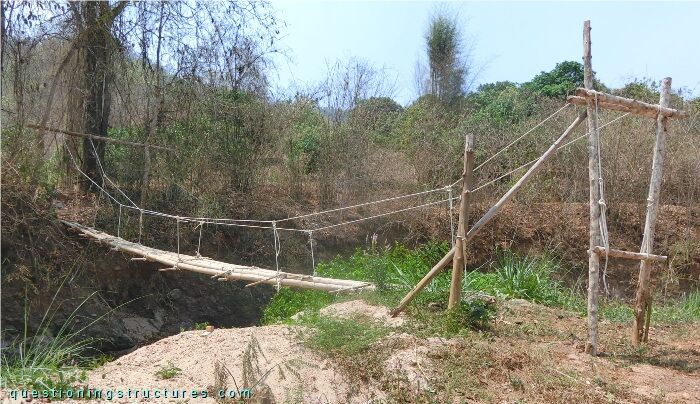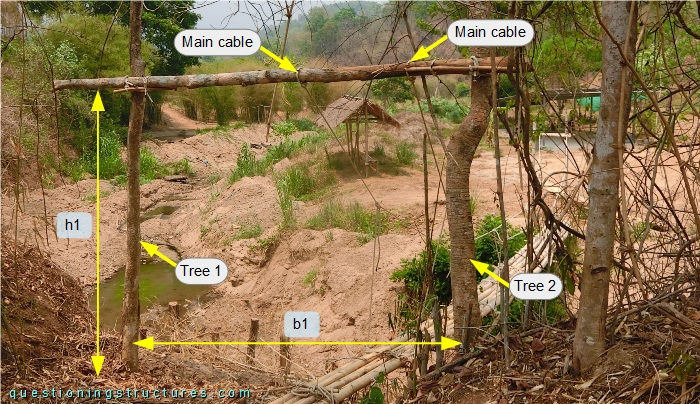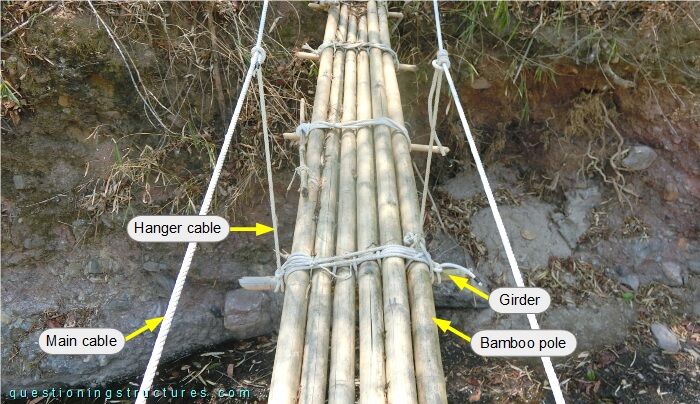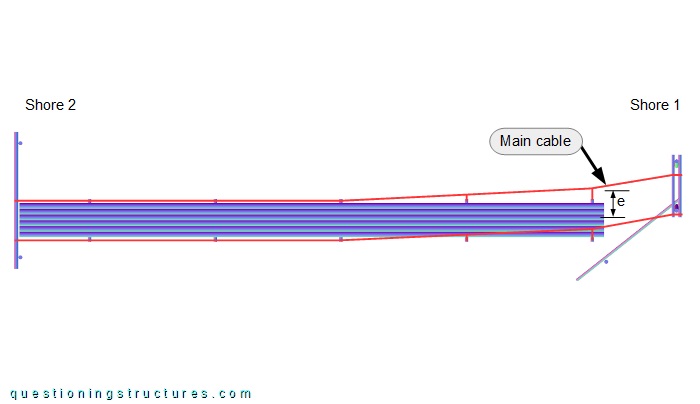General Information
Figure 1 shows a pedestrian suspension bridge.

| Type | Single-span suspension bridge |
| Main span | ≅ 10 m |
| Deck width | ≅ 0.6 m |
| Deck width to main span ratio | ≅ 1:17 |
| Pylon | Wood logs (shore 1); trees and a wood log (shore 2) |
| Girder | Bamboo transverse beam |
Pylon and Deck Vibration
Figure 2 shows the pylon on shore 1.

The pylon is made of wood logs and consists of two columns (1 and 2), three cross-beams (3 to 5), and an external brace, which consists of a column (6) and a diagonal (7). The columns are embedded in the ground; the diagonal is tied to column (6) by a rope and a short bamboo pole, and the remaining members are connected by nails. The main cables are made of ropes; they pass over cross-beams 4 and 5 and are anchored by tying to cross-beam 3. The height h ≅ 2 m, and the width b ≅ 0.7 m. Figure 3 shows the opposite pylon.

The pylon consists of two columns made of living trees and a cross-beam made of a wood log; the columns and the cross-beam are connected by tying using ropes and short bamboo poles. The two trees have a different shape; the height h1 and the width b1 ≅ 2 m. Figure 4 shows a main span sector.

The deck consists of six bamboo poles placed side-by-side and bundled by ropes. The hangers (also made of ropes) are tied to the main cables, the girders, and the deck's external poles. Figure 5 shows a front view of the pylon on shore 1.

The bamboo poles are placed directly over the creek banks. There is an eccentricity (e) between the axes of the deck and the pylon, which affects the geometry of the main cables and the hangers. Figure 6 shows a schematic layout of the bridge.

The vertical vibration of the main span during single pedestrian-induced excitation is shown in video 1.
Video 2 shows the pylon vibration on shore 1 during single pedestrian-induced excitation.
The pylon vibration on shore 2 has a much lower amplitude.